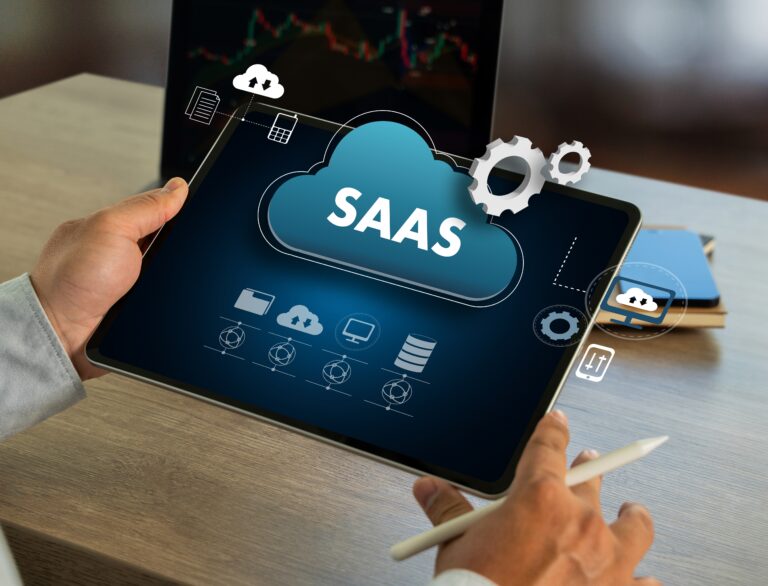Having a consolidated enterprise resource planning (ERP) platform in place offers several benefits. In fact, according to data compiled by Technology Evaluation Centers (TEC), the top three benefits of ERP include faster processing, increased collaboration, and centralized data.
The first two seem self-explanatory, but once you have all this important information in one spot, how does that help you? On its own, it doesn’t. However, when you engage in ERP integration and begin sharing this data across your business to support other functions, its value quickly emerges.
In this article, we’ll discuss how you can maximize your ERP investment with ERP integration.
What is ERP integration, and how does it work?
Put simply, ERP integration refers to sharing back-office data between systems and processes by connecting a third-party application to your enterprise resource planning platform. These outside tools can then manage, manipulate, or analyze your operational information as needed without requiring human transcription.
The integration might be handled by the third-party tool alone, which directly communicates only with the ERP platform. For more complex environments, the business might leverage specialized technology, such as an enterprise service bus, that creates a centralized integration hub. Each application can share data through this common pool with any other system connected to the same pool.
Want to see ERP integration in action? Explore our use cases.
While your ERP solution might allow you to perform the most basic functions — creating an invoice or updating relevant accounts within your general ledger — with integrated A/R tools, you can perform much more. You might accelerate billing processes through automation, track performance with robust analytics, or even predict which customers will most likely default on payments and create bad debt.
These expanded functions can drive real value for your A/R and your organization. This might explain why, according to a 2024 study released by Datos Insights, one of the leading gaps mid- and large-sized businesses identified in their billing strategy was poor integration of payments data with existing ERP systems. It might also explain why 35% of respondents already leveraged integrated third-party software to handle these functions and why 55% were either “interested” or “very interested” in automating their A/R efforts.
12 ERP integration benefits
Your business might experience quite a few ERP advantages from integration. Typically, ERP benefits align with one of the three general categories mentioned in the TEC study: faster processing, increased collaboration, and centralized data.
1. Boost productivity
ERP integration is often the forerunner for process automation. When data can be moved seamlessly between systems, it becomes much easier to set up centralized workflows that can direct your information — and the real-world business efforts it controls — without direct human oversight.
Similarly, automation eliminates unnecessary wait times. By offloading repetitive tasks to technology daily, you can focus your workforce on more strategic efforts instead.
2. Expand capabilities
Even if you remain current on all of the most recent updates for your ERP system, you’ll still be limited to only those capabilities and functions bundled with the platform. And given the cost you’ve likely already outlaid, switching to a new platform for a few features isn’t financially feasible.
Through ERP integration — like what we can offer with our automation software — you can access a broader set of tools that let you control and leverage your ERP data in ways you never imagined.
3. Improve accuracy
If you aren’t leveraging integration to share your ERP data with outside systems, you’re likely relying on more traditional measures — like manual transcription. Unfortunately, these alternate strategies make it easy for human-caused errors to creep into your critical operations. These mistakes can easily cause service disruptions, waste time and money, and even undermine customer relationships.
4. Limit confusion
If your staff members view outdated information that varies depending on which application is being accessed, don’t be surprised when shipments are missed, orders are overlooked, or you experience cash flow problems. Not only can ERP integration help mitigate these challenges by creating a single version of the truth, but with the right tools in place, you can ensure that updates are made in real time, better informing key decision-makers and equipping them to make the right calls for your business.
5. Discover new insights
Another benefit of ERP integration is discovering new insights. Similarly, with your relevant data in a standard format and framework, you’re in a much better position to report on key performance indicators (KPIs) to all your stakeholders. You can even add more robust analytics tools to parse your records to isolate inefficiencies, detect previously unnoticed patterns, and predict future performance.
6. Simplify compliance
Across all markets and sectors, there are various legal and industry standards that every business will need to meet. But complying with those expectations is rarely sufficient — you often need to prove that compliance, particularly to outside agencies. Fortunately, with an integrated ERP environment backed up by consistent reporting processes, creating and maintaining the comprehensive documentation needed to keep the auditors at bay is much easier.
7. Enhance collaboration
Outside parties — like customers and suppliers — commonly need access to your ERP data. Through ERP integration, you can more readily share these details across businesses, making it easier for vendors to get you the needed resources and for buyers to pay you on time.
8. Liberate data
Not all business happens in the office. You might have sales staff or technicians in the field depending on your work. They will also require access to sales platforms, human resources tools, maintenance schedules, and all other back office systems. With an integrated environment, you’ll be in a better position to empower your remote workers, giving them what they need long before they ever return to one of your locations.
9. Promote scalability
Rapid growth isn’t a bad problem to have. But when your operations are disjointed or rely on direct labor, a sudden spike in sales can quickly prove overwhelming and put your business and reputation at risk. ERP integration, however, lets you leverage software and other technologies to perform your everyday tasks in a manner that is much easier to scale up, commonly only requiring more processing power or additional licenses.
10. Optimize performance
When your data has been freed, you can often uncover new working methods that will lead to tremendous success. For instance, if you can readily share sales and customer information across departments, you can build marketing campaigns targeting specific customer demographics based on their unique needs. When this data is available to production and design staff, they can more easily create new products and services that will catch the consumer’s eye.
Similarly, when your entire supply chain, from vendors to end customers, has access to the same records and information, you can more easily streamline operations, instituting just-in-time inventory controls or similar measures.
11. Cut costs
Admittedly, your initial investment in an ERP platform can be pricey, and whatever integration strategy you leverage will cost you further. But these efforts should soon pay off. Reducing administrative burdens and operating errors, coupled with new efficiencies, will let you rein in labor costs. Consolidating your tools and processes will also lower your ongoing IT spend.
12. Increase customer satisfaction
Considering all of the benefits of ERP integration we’ve touched on, it should be no shock that ERP integration can also create happier customers. As service becomes more reliable, orders are delivered more quickly, and invoices become more accurate, buyers will experience fewer headaches when working with your company.
ERP integration is just the first step. Go further with Invoiced.
Connecting your ERP or accounting system is a foundational step in streamlining finance operations — but it’s not enough to truly transform your cash flow. To unlock real efficiency and control, you need automation. Specifically, automating your accounts receivable processes can deliver some of the fastest, most cost-effective improvements to your cash flow and working capital.
That’s why we’ve built Invoiced with deep, flexible integration capabilities — so you can easily connect to leading ERP and accounting platforms or plug into your custom systems via our open API. But more importantly, we help you go further with robust AR automation features, including AI-powered cash application, automated invoicing and dunning workflows, and powerful reporting tools that give you visibility into your financial performance. Plus, with Flywire’s global payment technology, you can accept payments in over 140 currencies.
If you’re ready to maximize the ROI of your ERP investment and take control of your cash flow, schedule a demo with Invoiced today.






